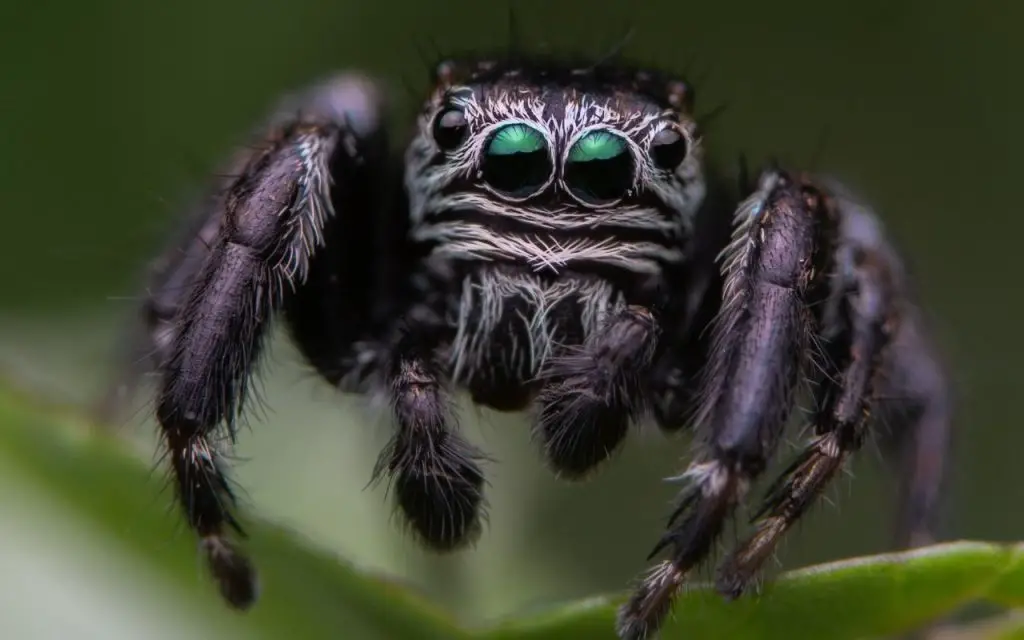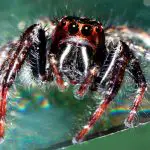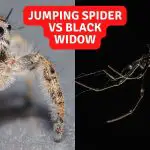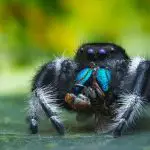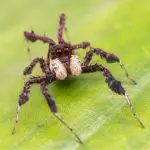As an avid jumping spider enthusiast, my life is often filled with the exciting antics of these tiny critters. I’ve kept several species of jumping spiders, from the zebra-striped Salticus scenicus to the bold Phidippus audax, and I’ve learned that feeding these fascinating creatures is more than just throwing in a fly now and then.
I’ve seen plenty of new jumping spider keepers ask: “What can I feed my jumping spider?” and I’m here to answer this question. Feeding your jumping spider can be fun, but you also need to make sure you give them food that is safe and nutritious.
What to feed a Jumping Spider
Jumping spiders, being true spiders, are carnivorous. They primarily feed on small insects and other arthropods in the wild. However, captivity diets can be a little more varied, while always keeping the spider’s nutritional needs in mind.
Here’s a list of food items you can consider for your jumping spider:
- House Flies: The common house fly is a staple in many jumping spider diets. They are easy to source and provide good nutrition.
- Fruit Flies: For younger or smaller jumping spiders, fruit flies can be a more manageable meal. Personally, I opt for flightless fruit flies because they are easier to catch.
- Crickets: Small crickets can also be a favorite among jumping spiders.
- Mealworms: These are high in protein and fat, making them an excellent supplement to the diet.
- Moths: Jumping spiders often enjoy the challenge of a fluttery, flying meal.
- Aphids: For tiny spiders, aphids can be an excellent choice, especially for species used to hunting smaller prey.
Remember, it’s essential to consider the size of the prey in relation to your spider. It’s generally recommended that prey should not be larger than the spider’s body.
Moreover, variety is key to ensure your spider gets a balanced diet. Also, it’s crucial to note that all food items should be sourced from safe places, free from pesticides and harmful chemicals. If you don’t have a pet store near, you can order food online.
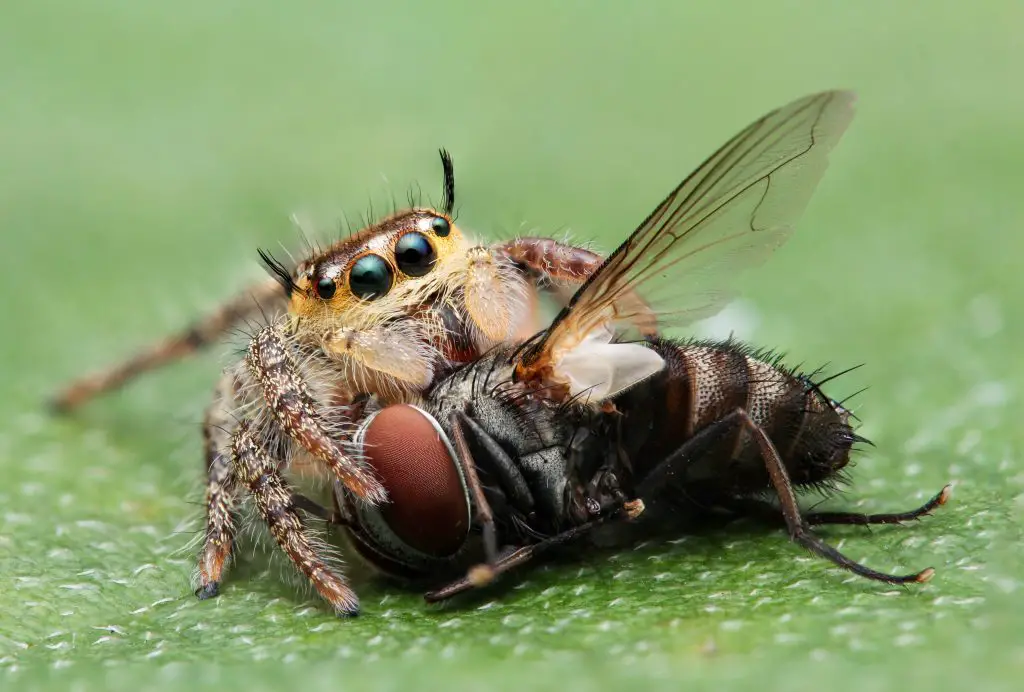
Portion Size and Frequency
Determining how much and how often to feed your jumping spider can be tricky, but with careful observation of your pet’s behavior, you’ll quickly get the hang of it.
The table below outlines my general feeding guidelines based on the spider’s size and age:
| Size/Age of Spider | Suggested Portion | Frequency |
|---|---|---|
| Spiderlings | 1-2 fruit flies | Daily |
| Juvenile | 1 house fly or small cricket | Every other day |
| Adult | 1-2 house flies or 1 cricket | 2-3 times a week |
Do note that these are general guidelines, and individual spiders may have different appetites. the main thing to remember is that baby jumping spiders need to eat more often.
If your spider refuses food, it may be due to stress, illness, or an upcoming molt. Always observe your spider’s behavior and adjust feeding accordingly.
The Importance of Hydration
Water is essential for your jumping spider. Unlike us, spiders don’t drink from a bowl. They prefer to drink water droplets from their environment. You can mist the enclosure lightly every couple of days to provide a source of water. Be careful not to overdo it; you don’t want to create a damp environment that could lead to mold growth.
What can I feed my jumping spider? Final thoughts…
Feeding your jumping spider is an engaging experience that deepens your understanding and appreciation of these incredible creatures. The hunting strategies they employ, their discerning taste, and their insatiable curiosity make every mealtime an adventure.
Whether it’s the aerial acrobatics performed in pursuit of a moth or the delicate pounce on a unsuspecting mealworm, watching a jumping spider eat is a spectacle of natural wonder.
It’s essential to monitor your spider’s reaction to different foods, their appetite, and their general behavior to ensure they’re getting a balanced diet and are in good health. Always source your spider’s food from reputable suppliers to avoid any risk of pesticide exposure. And remember, variety is the spice of life, even for jumping spiders!
May your spider-keeping journey be filled with fascinating observations and arachnid antics. And may your jumping spider thrive under your care, hopping from meal to meal, always ready for the next big hunt.
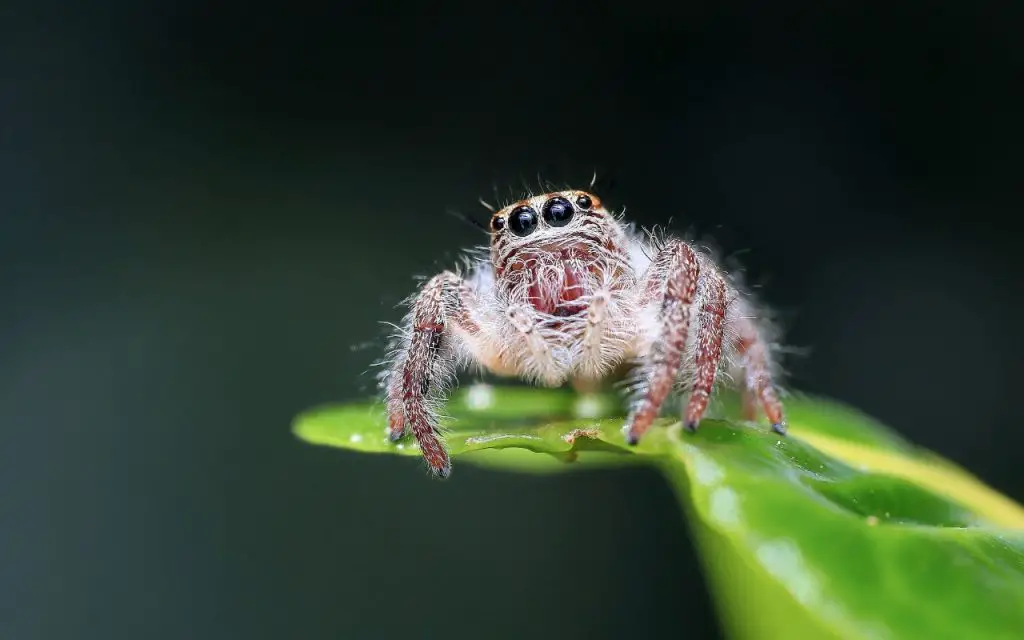
Can I feed my jumping spider dead bugs?
Jumping spiders won’t eat dead bugs. Whilst it’s true that feeding spiders live food feels a bit mean, there isn’t much we can do about it! These arachnids are sight hunters, which means their hunting instincts are triggered by seeing prey, and they especially like to see it move. It’s important to remember that predation is part of nature, and animals are unaware of the ethical ramifications that we may perceive as humans.
What can I feed my jumping spider if I don’t have bugs?
There really is no option other than bugs when it comes to feeding your jumping spider. They need live prey to stimulate their predatory instincts. If you can’t provide bugs as food, the spider will starve itself rather than eat anything else. Ideally, you should source bugs like fruit flies from an exotic pet store, or from a reliable online retailer like Josh’s Frogs.
Can you feed a jumping spider fruit?
Several species of jumping spider have been observed drinking nectar from fruit and plants in the wild. Sadly, this doesn’t mean you can feed them a plant or fruit diet in captivity. Those species that drink nectar/sap probably do gain some sugar and even other nutritional content from it. Notwithstanding, they still actively hunt for prey, and live bugs do make up the bulk of their food intake.
How many fruit flies do I feed my jumping spider?
Young jumping spiders need one or two few fruit flies daily. As they approach adulthood, you should switch them to larger prey, offered either once or twice a week. For example, you could give an adult Bold Jumping Spider one small cricket, or house fly twice a week. If it doesn’t eat the second time, just remove the prey item after a few minutes, or when you can see the spider really isn’t interested.

